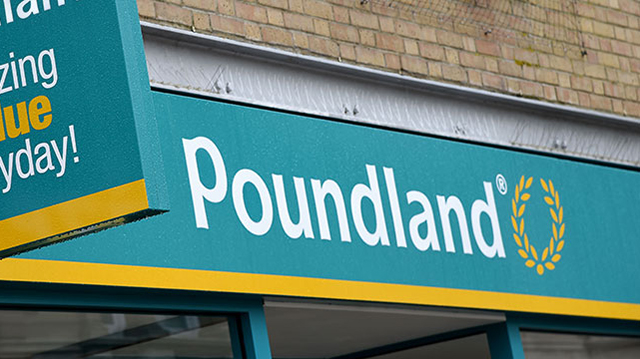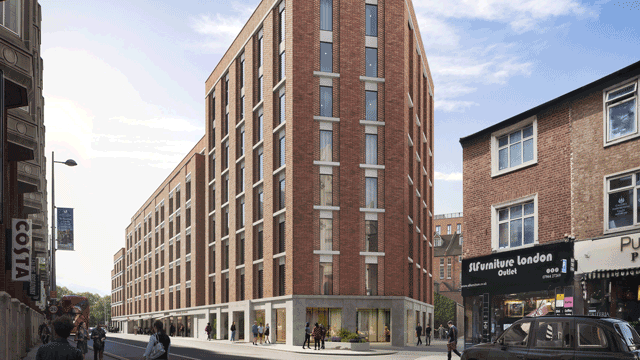Overcooked: Take one saturated market and mix well with credit crunch: is the Bulgarian retail market a recipe for despair? By Helen Osborne
Retail developers in the Black Sea-fronting nation are facing some major tidal changes, as the volume of shopping centre space in Bulgaria outweighs occupier demand. More than 20 shopping centres across the country are underperforming in terms of the number of units they let.
According to Pavlina Nikova, partner and head of retail services at Forton International JSCo, there are sometimes more than three competing schemes in a city.
She observes: “This influences retailers and causes them to take decisions to enter particular projects very carefully. They take into account the location, size and tenant mix – and of course the developer.”
So is there any hope for the survival of more fledgling developers in such a cut-throat market?
Forton’s latest retail report details 13 new shopping centres under construction, and Nikova is not hopeful of all reaching the finish line. “In my opinion, the market is already saturated and the credit crunch is influencing this greatly,” she says.
Some developments are already being delayed or even cancelled, and finance is decreasingly available – especially for new kids on the block. Nikova says: “Because retailers are choosing between at least two schemes in each of the big cities, the market is becoming occupier-led. Developers are no longer in a position to push up their prices.”
Irina Yordanova, who heads Colliers International’s retail department, shares this perspective: “In some cities, like Rousse, Stara Zagora and Varna, there are too many projects for the population. Some which lack good locations and have started their marketing late will have difficulty attracting strategic tenants and financing.”
While the simple economics of supply and demand may have left many new developments in the balance and some have already been put on hold, at least one developer has had reason to crack open the champagne. Three shopping centres opened last year, the largest of which was the 32,000m² Varna Mall, a five-storey development in the Black Sea city of Varna. Miller bought the centre for €120m, from the Interservice in association with Forton.
Anchored by a Piccadilly supermarket and 1,300-seat, eight-screen cinema, the centre has proved a worthwhile addition to Miller’s European expansion investments – its 150 shops are 100% let.
Foreign investors continue to be the most active in the Bulgarian market, accounting for more than 70% of total invested capital in the nation, according to Forton.
It is slowing, however, as investors’ perception of the risk has changed over the past year. But of those who are investing, most foreign input comes from Israeli companies based not only in Israel, but also Poland. These include GTC, Gazit Globe and Red Stone.
A couple of recent transactions have involved the sale of shopping centres to institutional investors. Carrefour Tsarigradsko was sold to Greek fund Assos Capital, while City Centre Sofia became the property of American firm Heitman for a reported €101.5m.
Yordanova says: “New owners are attracted by good return on investment combined with relatively low risk. We are still to see other shopping centres changing their ownership from developers to international institutional investors.”
GTC is constructing retail schemes at Stara Zagora and Varna. Other major developments include Carrefour’s shopping centre in the capital, Sofia, and ECE’s two schemes Serdika in Sofia and Cherno More in Varna. Nikova says these are the mostly likely to be favoured by retailers, because of the strength of the developers. In addition, she predicts that retailers will show interest in all Sofia developments.
It is not just the malls attracting retailer interest in the capital city. Its main commercial street, Vitosha Boulevard, was rated 32nd in Cushman & Wakefield’s report Main Streets Across the World 2007 and was recently given a redesign in the retro style of 1930s Sofia. The glamour of this location has attracted a multitude of international retailers – Benetton, Max Mara, Hugo Boss and Tommy Hilfiger, Dolce & Gabanna, Salvatore Ferragamo, Orsay, Bottega Veneta and L’Occitane – all prepared to pay top-notch rents of €1,200 per m².
Despite the downturn, international retailers are still showing they will take a risk, says Nikova: “After entering the EU, Bulgaria and Romania became flavour of the month, with a lot of retailers willing to enter the market. This has grown year on year, especially since the market is now more stable.”
Good news for the capital, but what about the rest of the country? Up-and-coming areas with continuing growth include Plovdiv, Varna, Burgas, Stara Zagora and Rousse. Yordanova notes that international and local developers are shifting their interest to regional cities with populations below 100,000. She adds: “Another direction is presenting new formats to the market – such as retail parks on major roads close to big cities.”
If major developers such as ECE, GTC, Gazit-Globe, GE and Aviva Group can negotiate with the retailers who hold the cards – Inditex, Takko, Deichmann and DM – they should be able to go with the current of this turning tide.
Yordanova predicts that the credit crunch will create a more conservative approach to new projects among investors. She explains: “Banks will require higher financial participation from the developers and a higher percentage of leased areas before they back certain projects. This process we consider to be a good one – the projects with solid investors, a good concept and a long-term approach will be successful.”
RETAIL REAL ESTATE HIGHLIGHTS
– The total stock is now more than 138,000m2 of shopping mall space
– The pipeline increased by 141,400m2 of contemporary shopping mall space
– Four shopping malls, with a combined GLA of 123,000m2, broke ground in the city of Rousse in the first half of 2008
– The net amount of high street space in Sofia is 38,000m2, withan emphasis on fashion and shoes/accessories
– Varna’s high street space amounts to around 16,000m2.
RETAIL WAREHOUSES
Nine outlets opened their doors across Bulgaria in the first half of 2008, eight of which belong to the food segment. Billa and Kaufland were the most active food chains during this period – both expanded their territory to west and east Bulgaria, adding three and four new outlets respectively.
No new big-box retailers entered the market in the first half of 2008, but Carrefour announced its intention to open its first hypermarket on Bulgarian soil in the city of Burgas.
The DIY segment is still relatively undersupplied in the larger cities – Sofia, Plovdiv and Varna – in terms of number of outlets in relation to catchment. Varna is also undersupplied with food hypermarkets, but that is compensated for by the many Piccadilly supermarkets.
The average unit size is 170m2 in Sofia, and 77m2 in Varna. This is expected to fall because of a continuing trend to subdivide units. As expected, the leading categories are fashion and shoes and accessories followed by restaurants, cafés and services.
Source: Colliers International
ECONOMIC ENVIRONMENT
The inflow of international funds exceeded ¤1.22bn in April 2008, with the property sector accounting for 38% of all foreign direct investment in the first quarter of the year. GDP fell to 5.6% in Q3 from 7.1% during Q2. In May, inflation rose to 14% year on year, but 2008 year-end inflation is expected to ease moderately. However, the inflation outlook in the medium term remains uncertain.
Unemployment fell to 6.5% in Q1 2008. The average monthly wage amounted to 500 levs (¤256), up 24.7% on a yearly basis.
Source: Colliers’ International
OCCUPIERS
Market sentiment has generally been positive, although rents remained unchanged for the second consecutive quarter last year.
A number of international retailers are moving forward with definitive expansion plans, and some have already established a presence throughout the country. However, a lack of modern space on the main high streets means more high street operators are seeking retail park representation.
Source: Cushman & Wakefield
INVESTMENT
The total investment volume decreased in the second quarter because of an absence of large transactions. However, quite a few medium-sized deals were reported.
Foreign investors continue to be the most active in the market, accounting for more than 70% of total invested capital in Bulgaria.
Prime retail yields are coming under increasing downward pressure, with Sofia high street yields having softened to 6%, although shopping centre yields have held firm at 7.5%
Source: Cushman & Wakefield
WHO’S BUILDING WHAT
The inventory of shopping mall space in Bulgaria increased by 31% in June 2008, with the arrival of the 33,000m2 Mall Varna. The total stock is now more than 138,000m2. This increased further during the second half of the year, with Stara Zagora coming on stream.
Four malls, amounting to 123,000m2 of space, are under construction in the Danube town of Rousse, which is forecast to have the highest density of mall space per capita in Bulgaria when these are complete. Grand Plaza, Danube Mall, Mall Rousse and Mega Mall all started construction during the first half of 2008, and are scheduled for completion in 2010-11.
Country wide, the development pipeline now stands at 545,000m2 of mall space under construction.
Source: Colliers’ International










